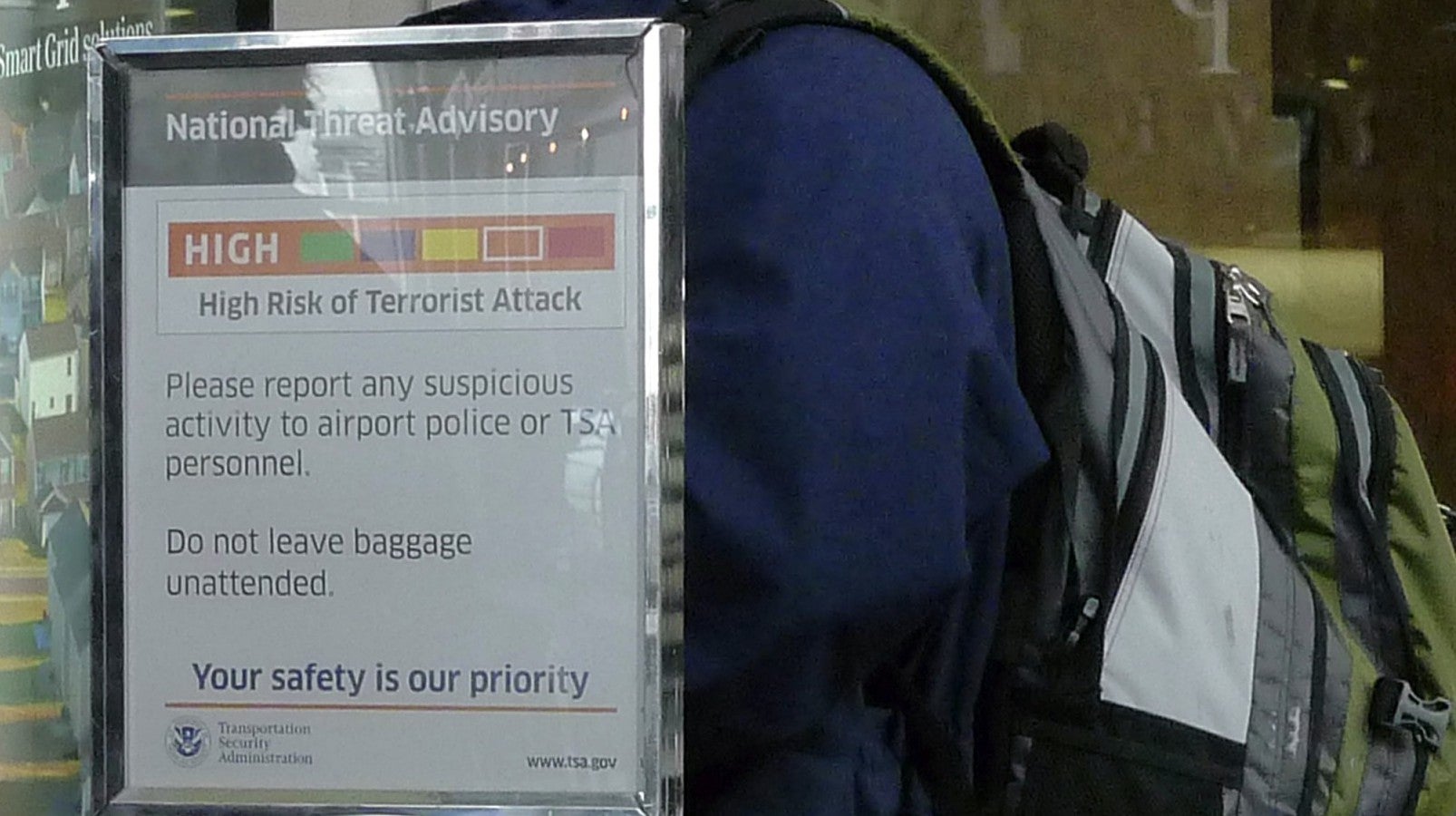The US is updating its terror alert warning system with a third category of risk
Since 2010, the US Department of Homeland Security has been operating with two types of alerts to signal terrorism threat levels: “imminent,” when the government has specific information about the time and place of a threatened attack, and “elevated,” when information suggests that an attack has been planned but no specifics are available regarding the time or place. Neither of these alerts has ever been activated, because the bars are set high—both levels are reserved for “credible” threats.


Since 2010, the US Department of Homeland Security has been operating with two types of alerts to signal terrorism threat levels: “imminent,” when the government has specific information about the time and place of a threatened attack, and “elevated,” when information suggests that an attack has been planned but no specifics are available regarding the time or place. Neither of these alerts has ever been activated, because the bars are set high—both levels are reserved for “credible” threats.
This week, officials announced plans to add a third category, though they did not say what it would be called or what would trigger it.
The decision to modify the existing terror alert system was made months ago, said homeland security secretary Jeh Johnson, speaking at a live event hosted by Defense One (a sister publication to Quartz). Johnson mentioned that the new category needs to accommodate heightened concerns about “lone wolf” forms of terror attacks, which are difficult to predict.
Australia also recently updated its version of national terror threat alerts, using five tiers to indicate whether attacks are “not expected,” “possible,” “probable,” “expected,” or ”certain.” The announcement about the change came with an official statement saying “the most likely form for a terrorist attack in Australia would be an attack by an individual or a small group of like-minded individuals.”
The current US system replaced a five-color scheme implemented in the aftermath of the Sept. 11 attacks on the World Trade Center and Pentagon. According to the New York Times, “that program was widely criticized because it scared many people when it was elevated, but provided few details about what the public should do or what the threat was.”